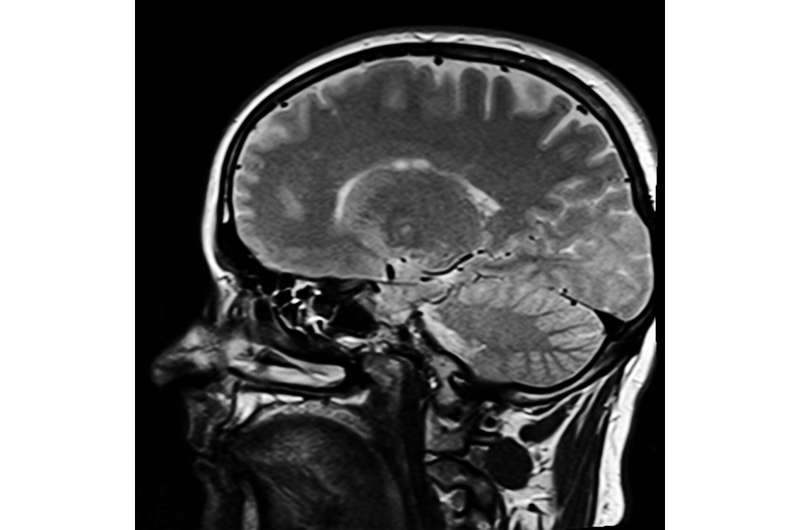This article has been reviewed according to Science X's editorial process and policies. Editors have highlighted the following attributes while ensuring the content's credibility:
fact-checked
trusted source
proofread
AI effective in diagnosis of head and neck cancer, finds researcher

Studies in a new doctoral thesis indicate that an AI-supported method is effective in the diagnosis of squamous cell carcinoma of the head and neck (SCCHN). In addition, machine learning (ML, a subfield of artificial intelligence) was used to develop a model from clinically available data for prediction of recurrence in squamous cell carcinoma of the tongue (SCCOT).
The overall aims of the studies were to assess the usefulness of PET/CT (X-ray with contrast agent and images of how the agent is taken up in the body) in head and neck cancer and apply AI for predicting development of SCCOT and recurrence of SCCHN. Four studies answered the questions asked.
"Our studies offer a systematic AI method for detecting squamous cell carcinoma of the tongue, early before clinical symptoms appear, by using, among other things, interpretable machine learning," says the dissertation's author Amir Salehi, Department of Medical Biosciences.
Better prognosis with diabetes
The results suggest that people with SCCOT, regardless of diabetes status, may benefit from treatment of glucose levels, as SCCOT patients with diabetes had better prognosis than non-diabetics.
"Of course, this is just the beginning, and more research needs to be done before it can be put into clinical practice. We were surprised that diabetic patients had better relapse and survival outcomes than non-diabetics when it comes to SCCOT," says Amir Salehi.
For the methods, results from PET/CT, pan-endoscopy with biopsy and US-FNAC were compared from patients suspected of having head and neck cancer between 2014 and 2016. Clinical, genomic, transcriptomic, and proteomic markers identifying recurrence risk were investigated. In blood samples taken from healthy individuals, data from proteins relevant to inflammation and/or tumor processes were evaluated. The SHapley Additive Explanations (SHAP) approach was used to determine the best ML-algorithm for feature selection. AdaBoost, Artificial neural networks (ANNs), Decision Tree (DT), eXtreme Gradient Boosting (XGBoost), and Support Vector Machine (SVM) were used to create prediction models. Clinical data from patients were analyzed using statistical and ML techniques.
More information: Clinical investigation and application of artificial intelligence in diagnosis and prognosis of squamous cell carcinoma of the head and neck. umu.diva-portal.org/smash/record.jsf?pid=diva2%3A1757115&dswid=-6420


















